Miami 2014 comms #1: WiFi, Cellular, and V-SAT advances
That’s the Web browser built into the Humminbird ION10 MFD that I first saw demoed in Lauderdale (pre browser), and the test was pretty realistic for a boat show. It was easy to log the ION onto my phone’s WiFi hotspot and if you click the image bigger, you’ll see how well it rendered a complex site like www.powerandmotoryacht.com. It even supports tabs for multiple sites, so if I were out fishing on, say, a sunny center console, I could have had a weather site open while still checking my gmail or moderating Panbo comments, all on a bright waterproof screen. This is a MFD first, I think — the Standard Horizon CPN1010i can access the Web, but not while in navigation mode — though the lack of ION detail on Humminbird’s site suggests that they are taking their time getting it out the door.
More conventional boats’ WiFi often involve an onboard router combined with a hi-power bridge like the Rogue Wave I’ve been testing for years. One thing that distinguishes the Rogue from other solutions based on the same Ubiquity hardware is custom browser pages that make changing hotspots easy, and it was nice to see that there’s now a mobile version suitable for phones. Cruise into a new harbor, find a good hotspot on your phone, and all the devices using your boat router will be online.
Wave WiFi was also showing smaller versions of its marine broadband router and dual-antenna MIMO versions of its bigger-boat EC-HP and EC-ER models. But notice all the locked access points on the screen above; WiFi Internet access can be great on a boat, but it’s not as easy to find as it once was. Wave WiFi wants to help in that department, too, encouraging electronics installers to work with them on creating quality marina hotspots. (And I encourage installers to pitch an AIS receive station at the same time, as it’s another relatively inexpensive way to make a marina stand out.)
A lot of cruising boats use cellular data connections instead of WiFi, or at least when beyond good hotspots, and marine cellular accessories seem to be entering a new phase. Behold the new and interesting-looking Digital Antenna 1285 and Shakespeare Galaxy 5239 wideband antennas that may soon distinguish some masts. After testing a Wilson cell booster that includes 4G/LTE frequencies, I learned that Shakespeare is working with SureCall on a series of “anywhere” booster kits — I think the Halo 2G/3G/4G kit is almost ready to ship — and in Miami I saw a prototype 2G/3G/4G Digital Antenna amp. All the booster manufacturers are scrambling to meet just-extended FCC technical requirements, but the end result should be a better booster environment without worries about “taking down a tower.”
If you do have a fast Internet connection right now, you might want to check out BaronMarineWeather.com’s interactive map. It’s mostly U.S. data right now and a little buggy, but I don’t think I’ve ever seen so many interesting data layers on a free site before. This screen I generated yesterday afternoon shows the predicted precipitation (future radar) this morning, and so far, it’s been fairly true (a yucky day). The justifiably proud Baron meteorologist who showed me this site in Miami wasn’t sure if it will stay forever free, but I’m trying to find out.
Cruising in a warm exotic locale would be nice right now, but I am getting to the age where access to telemedicine is moving up the equipment list. So, it’s good to learn that bandwidth-efficient Digigone SecureChat can be used with GWU’s Maritime Medical Access service, and that the large, expensive remote viewing station will soon have an alternative consisting mostly of the Android tablet above and a neat wireless hi-res macro camera that’s pointed at the “patient’s” face in this demo (the “doctor” was actually a computer tech with a stethoscope back at the Digigone offices). Though I’ve experienced SecureChat video conferencing that seemed useful at only about 60 Kbps, Digigone recommends a minimum of 150 Kbps for telemedicine, and I think that means at least an Inmarsat FleetBroadband 150 connection. (Hey, there’s a new “small boat” service called Fleet One coming, though all that’s out now is a partner announcement).
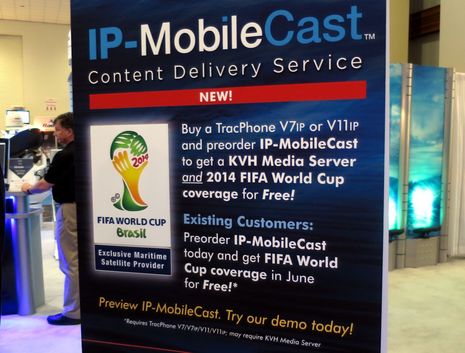 But while I’m having yucky day fantasy, I might as well include broadband satellite comms, and I’d quite enjoy the very clever add-on that KVH has come up with. With the acquisition of Headland Media last spring, KVH got access to all sorts of premium movie, TV, and news content, all of which will soon appear as the IP-MobileCast content delivery service. You’ll need at least a TracPhone V3-IP mini-VSAT system, plus a MobileCast subscription, but then content like first-run movies will start flowing “over the top” — meaning when the mini-VSAT network is not busy, mostly at night, and also beyond your regular data subscription — and into a KVH-supplied media server. So, most anywhere your big yacht might be, you can use a tablet, PC or smart TV (or converter) to watch things you couldn’t even get on your home cable system. Not to mention news in so many flavors it reminded me how far flung the yachting world is.
But while I’m having yucky day fantasy, I might as well include broadband satellite comms, and I’d quite enjoy the very clever add-on that KVH has come up with. With the acquisition of Headland Media last spring, KVH got access to all sorts of premium movie, TV, and news content, all of which will soon appear as the IP-MobileCast content delivery service. You’ll need at least a TracPhone V3-IP mini-VSAT system, plus a MobileCast subscription, but then content like first-run movies will start flowing “over the top” — meaning when the mini-VSAT network is not busy, mostly at night, and also beyond your regular data subscription — and into a KVH-supplied media server. So, most anywhere your big yacht might be, you can use a tablet, PC or smart TV (or converter) to watch things you couldn’t even get on your home cable system. Not to mention news in so many flavors it reminded me how far flung the yachting world is.


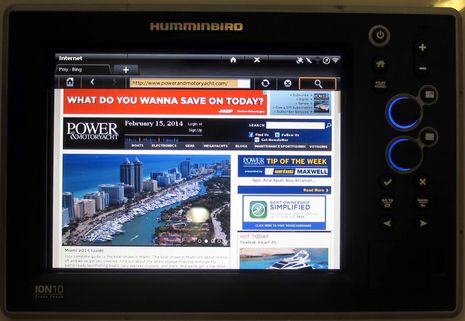
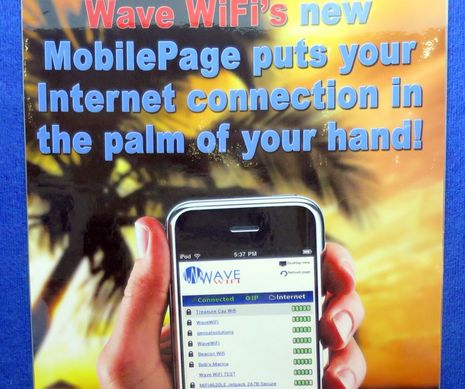
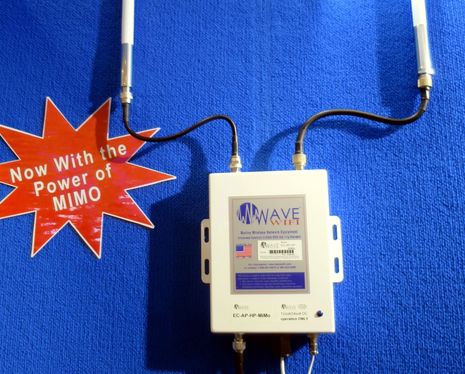
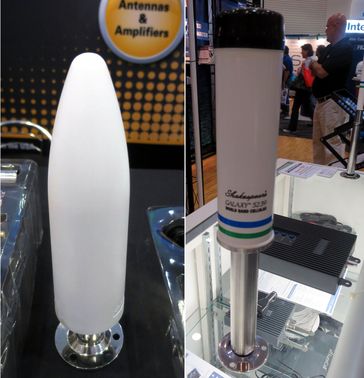
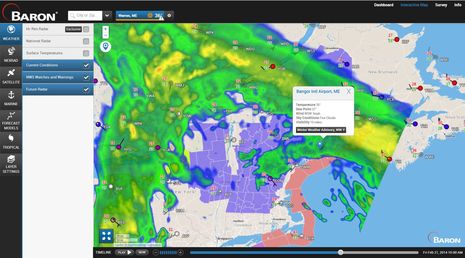
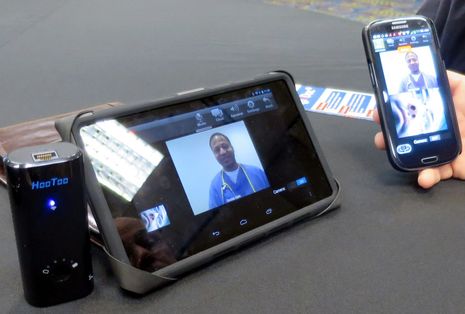
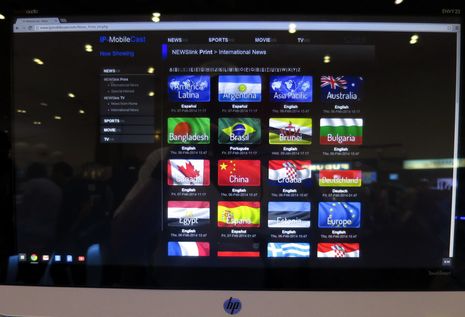
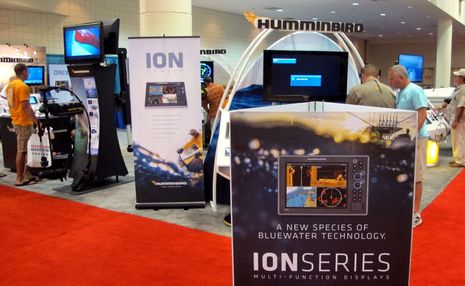










Ben your BaronMarineWeather.com link is wrong.
Thanks, John. I fixed the link in the entry, and it’s also here:
http://baronmarineweather.com/map
The rare February thunderstorm line that just passed over my area — picture wicked soggy snow and wet sheets of ice — was fairly well predicted by Baron yesterday, with graphics. Impressive.
Ben, I have been pushing Wave to market a MIMO bridge router for the last 3 years. I’m glad to see they have finally launched this product. I have found using a combination of horizontal and vertical polarized antennas provides the best N MIMO performance.
Bill
I am very interested in connecting an external antenna to my Verizon AirCard (which is connected to my Cradlepoint Router, in hopes of pulling in a stronger signal. I looked the Digital Antenna 1273 and see the 1285 mentioned above.
Has anyone had suggess using either of these antennas? I -4db gain has me wondering if any gain from the antenna will be lost in the cable and connectors with a negligible benefit?
Thanks,
Henry
Henry, I have been using something similar but made by CellPhoneMate, the model CM288W. Although it lacks real gain it is a true 698MHz to 2700MHz antenna unlike the compromise antenna inside or on your VZW aircard. My performance is like night and day when using the external antenna. Think about this, how would your aircard work if you could mount it high on your vessel?
Then ask yourself how would it work with a decent antenna mounted high on your vessel?
These antennas help even though they are low gain.
Bill
Thanks, Bill. The CM288W may be the same thing as the Shakespeare Galaxy 5239 mentioned in my entry:
http://www.surecall.com/product/Antennas/In-buildingAntenna/119/CM288W
Did you use LMR400 or similar for cable?
Bill and Ben,
I have my Cradlepoint router and Verizon Aircard in the pilothouse approximately 15′ off the water. I can put an external antenna on the mast or pilothouse roof and gain another 5-10′. I am hoping just the design of the antenna helps some over what is probably 1-2″ of wire in the Aircard.
The Digital Antenna, Shakespeare and CellPhoneMate all seem to be similarly sized, shaped and specs.
Any difference that you noted?
Henry, Digital told me that their 1200 series wideband bullet antennas were designed specifically for marine use by founder Dr. John Jones and also that they’re made in the USA.
I mounted mine on a spreader above my Radar dome about 20′ feet above the boats waterline. I used LMR400 cable. I had great results I am using a Samsung UML290 USB modem into a CradlePoint CBR350 router. I actually installed 2 external antennas one for the 2G/3G/4G (MIMO port) and the other antenna and feedline for the dedicated 4G LTE 700MHz only port on the Samsung VZW modem. In my installation the router used to sit inside a fiberglass hull inside an equipment cabinet. Even when I removed the modem/ router to a shelf near a window my results were 10 to 15db worse as a stand alone modem/ router. What I’m trying to say is the antennas built into my VZW LTE/ CDMA modem are compromise antennas and could be blocked depending on where I stood. With the now 2 year old setup it really rocks. The best way to measure performance on a cellular device is by getting into the devices trace mode. CradlePoint makes this easy because the RSSI or RSRP (for LTE) can be directly measured so it’s a data based test and signal improvements are easy to measure. I also use a small USB extension to get the Samsung VZW USB modem away from the CradlePoint routers radio this also improves performance.
I hope this helps.
I did install a VZW specific 700MHz LTE amplifier and a 2G/3G direct connect amplifier. I found them to actually make my speeds slower. They are still installed and with a few jumper changes I can put them back on-line if needed but I haven’t had the need in over a year.
I’m no fan of a specific BDA manufacture but I did install one of their Sprint 3G amplified cradles to another CellPhoneMate external antenna and it cleaned up my fluctuating EcIo and vastly improved my RSSI on CDMA.
For high speed data I think it’s hard to beat VZW they are so far ahead in site builds and 700MHz propagates extremely well. AT&T would be my second choice for high speed data.
I have an Ericsson W35 still installed but deactivated that used to work great on HSPA+ it is connected to a Digital 563W. I’m looking to get rid of the W35 in the near future.
Bill
I’m currently working on a project that will use 2 of these antennas inside a KVH M3 dummy dome. The dome will house an upgraded CradlePoint router as well as the Samsung USB modem. It will be replacing my Skipper 150 and balancing the looks on my arch because the port side has a working M3 TracVision system.
It should be a good looking performing cellular based data/ VOIP package.
In my last post I didn’t mention that I have been successfully using an inexpensive VOIP system over VZW’s LTE network with excellent results. The VOIP box feeds a DECT cordless phone system which supports Bluetooth so that position allows me to make and receive calls from my Samsung Galaxy smartphone using on Sprint’s service.
Bill
Wireless One
Tuckerton, NJ
40 Mainship Sedan Bridge
Do check out http://baronmarineweather.com/map while you can. I learned this morning that it’s just a quickly thrown together demo that will go offline in a few weeks. The idea is to show off some of the marine weather products that Baron wants to supply to apps and web site developers, and even MFD manufacturers. Apparently some partnerships will be announced soon.
I’m particularly impressed with what’s called “future radar” or the “5km BAMS” weather model (they’re the same). I’ve seen some uncanny specific precipitation forecasts presented in the same way we see realtime NEXRAD. Also impressive is the ocean currents forecasting which includes weather, not just historical data and recent measurements. And there’s much more.
Developers can go here for info on the API:
http://www.velocityweather.com/
Henry, I have installed a few of these antennas made by someone else but I believe sold by Wilson. They have some real gain in the PCS bands and create their own ground plane.
Here are the specs.
Features:
Wilson 301130
Omni-Directional Antenna
Built-In Chrome-Plated Radial Ground Plane
Fiberglass Encased
Fits Standard 1 inch x 14 threaded mount
Mount is NOT included
Specifications:
Model: 301130
Frequency range: 700-800 / 824-894 / 880-960 / 1710-1880 / 1850-1990 / 2110-2170 mhz
Antenna gain: 3.4db / 5.12db / 3.5db / 3.1db / 6.12db / 0.2db
Impedance: 50 Ohms
Cable: None included – select a cable from the menu above
Height: 21″ (including coupler)
Connector: FME female
Mount: Standard 1-inch x 14 thread – mount is NOT included (can be added from the menu above)
Polarization: Vertical
Material: Fiberglass
Tessco and the 3G store carry these and the cable/ adapter kits.
Bill
Wireless One
40 Mainship Sedan Bridge
Bill,
I have two antennas I am going to try.
I just recieved a TerraWave M3060070O10006OSS – cellular phone / Wi-Fi antenna from Tessco. And am in conversation with Wilson Electronics for the correct adapter from my UML295 to the “N” connector on the antenna.
Thanks – Henry
Henry, please post the results of your new installation. I have a UML290 so I’m not sure if my USB modem uses the same adapter/ jumpers as the newer UML295. The 3G Store is a good source for adapter cables for various modems.
Bill Lentz
Wireless One
40 Mainship Sedan Bridge
The new little weather widget on the top of Panbo’s main page doesn’t look like much but it links to some really interesting widgets that I put on my About page today. You can even set them to remember the U.S. site you’d like to keep track of:
https://panbo.com/about.html#Weather
Henry did you install the antennas to your VZW LTE modem? Did the upgrade increase performance?
Thanks,
Bill
MV;Wireless One
Little Egg, NJ
Henry did you install the antennas to your VZW LTE modem? Did the upgrade increase performance?
Thanks,
Bill
MV;Wireless One
Little Egg, NJ
Inmarsat Fleet One satellite communications for smaller boats has purportedly gone live: http://goo.gl/R81r3g
The tiny terminal with “data connectivity up to 100 Kbps, a single voice line and SMS” plus Inmarsat’s 505 safety service sounds interesting. But I can’t find anything about hardware or service pricing. Anyone?
I keep up on this stuff including what’s actually inside the routers making it work … always in search of the newest level of WiFi or nG where n is currently 4G LTE. The problem with the newest level of 4G LTE is #1 hardware being available, particularly routers, and #2 the cellular carriers actually supporting it. There is some new stuff out that can switch US / CAN cellular carriers with just a firmware update, and routers that can do multiple plug in modem modules – so US and US (2) or US and EURO/ASIAN (2) is possible. The external antenna connection on these routers is much nicer SMA than anything on a USB stick would have – if they have anything at all. A newer embedded card module will actually have the carrier switching firmware files already onboard it – which will cause heck for mfr.’s trying to charge support fees for getting something that should be FREE. I’m glad to see some boats actually installing 2 antennas for the MIMO support of both WiFi and 4G / 3G systems as this is really a necessity although most don’t want to run the cables and mount the antenna to do it.
I had the pleasure of being one of the BETA testers for the Wave WiFi N MIMO unit. It uses the same graphic user interface the original units used and it can be tailored for Smart Phone mode with one click. I use it with a single cross polarized Omni sold by Ubiquiti under the AirMax antenna line.
I have always recommended that people use dual antennas even prior to 4G. Many 3G systems can benefit by using diversity reception. There are modems that support this mode. For the best N MIMO and 4G results you should use cross polarization antennas.
Bill Lentz